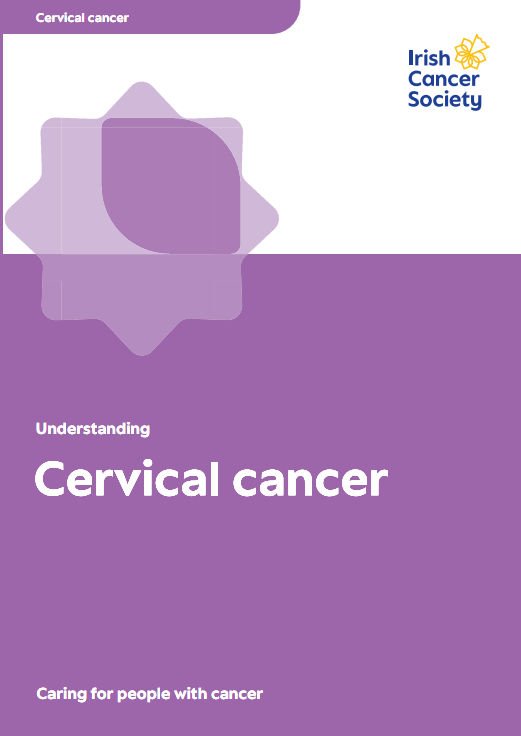Cervical cancer
Treatment
How is cervical cancer treated ?
The way cervical cancer is treated mainly depends on:
- The size and stage of your cancer
- The type of cervical cancer you have
- Your general health
- Your age and fertility
- Your own wishes
Types of treatment
An operation to remove the cancer cells with the minimum risk of them returning. Types of surgery can include a cone biopsy, hysterectomy, radical hysterectomy, bilateral oophorectomy, lymphadenectomy and radical trachelectomy.
Read more about cervical cancer surgery.
Radiotherapy and chemotherapy given together to make the radiotherapy more effective. Sometimes chemotherapy is given alone.
Using high-energy rays to kill the cancer cells. It can be given instead of surgery or after surgery. It may also be given if the cancer has spread to the area around the cervix.
Read more about radiotherapy for cervical cancer.
The radiation source is placed inside your vagina and/or uterus close to the cervix for a very short time to kill the cancer cells.
Read more about radiotherapy for cervical cancer.
Chemotherapy is a treatment using drugs to kill cancer cells. Chemotherapy for cervical cancer may be given:
- At the same time as radiotherapy to make the treatment work better (chemoradiation)
- As a treatment on its own for advanced cervical cancer
Chemotherapy is given in cycles with a rest period between treatments. This rest period allows your body time to recover from the side-effects of treatment. The drugs are usually given into a vein as an injection or through a drip (infusion). It may also be given in tablet form. Treatment is usually given in the chemotherapy day unit. Read more about chemotherapy.
Targeted therapies
Targeted therapies are drugs that target certain parts of cancer cells that make them different from other cells. In other words, they take advantage of differences between normal cells and cancer cells. Some drugs are given in tablet form. Others are given into a vein through a drip.
Sometimes a treatment called bevacizumab is given for advanced cervical cancer. It is usually given in combination with chemotherapy drugs. New targeted therapies are being developed all the time and existing therapies are being used in new ways.
You may also be given a targeted therapy as part of a clinical trial.
These types of treatments are not suitable for everyone. Your doctor and nurse will discuss your treatment options with you.Ask your doctor if there are any targeted therapies available to treat your cancer or if there are any trials that are suitable for you.
Read more about targeted therapies
Immunotherapy drugs help the body’s natural defences or immune system to fight cancer cells. The newest class of systemic therapy (cancer treatment that targets the entire body) are immune checkpoint inhibitors. Checkpoint inhibitors work by blocking proteins that stop the immune system from killing cancer cells. One type of checkpoint inhibitor used in treating cervical cancer is Pembrolizumab. It is sometimes used to treat advanced cervical cancer. Read more about immunotherapy.
Will I get side-effects?
The type of side-effects you get will depend on the type of treatment, the dose, the duration and your own general health.
Ask your doctor or nurse about any possible side-effects before your treatment starts.
Read more about the potential sexual side-effects of cervical cancer treatment.
Treating metastatic (secondary) cervical cancer
Metastatic or secondary cervical cancer means the cancer has spread beyond the cervix, usually to your bones, lungs or liver. Remember that not all cervical cancers spread.
If you have metastatic cervical cancer, your doctor will aim to slow down the growth of the cancer and reduce or relieve any symptoms you have. Treatment includes chemotherapy and radiotherapy. Or you may be suitable for a clinical trial.
If the cancer comes back in the same area as before, you may be able to have surgery to remove and cure your cancer.
Continue reading about cervical cancer




Get help & support

Support Line
Free support pack


